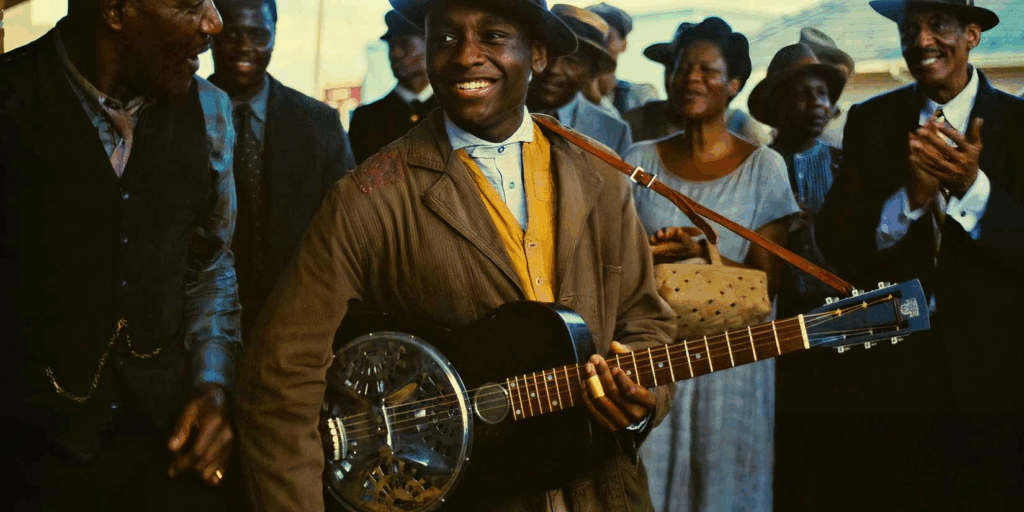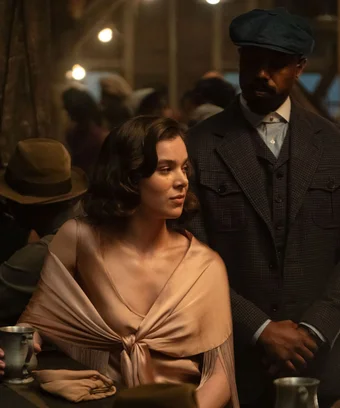Ryan Coogler’s Sinners was widely appraised for addressing racism in the Jim Crow era, standing as an egregious legacy for the American society. The film’s popularity with the audience can be discerned through its securing the biggest opening weekend since the pandemic. Set against the backdrop of Clarksdale, Mississippi in 1932, the supernatural film centres a layered storyline that uses vampires as a metaphor. This is done to portray the structural realities faced by Black Americans during the Jim Crow era in the South.
Vampire horror

Photography: Courtesy of Warner Bros. Pictures/ AP
In the film, the horror of vampirism is enmeshed in the real horrors of White supremacy that disenfranchised the people of color during the Jim Crow, immobilizing them at the peripheries of society. Their skin color became the source of apprehension. Through centering around twin brothers, Stack and Smoke, played by Michael B Jordan, the film shows their return to a town from where their ancestors were forced out in chains. This forcible displacement occurred after the expropriation of their labor for building the town of Mississippi. The two brothers open a Juke club with the nurturing hopes of strengthening communal ties through music.
Characters: Survival, Racism, and Agency
Each character’s portrayal in Sinners is richly done, navigating personal struggles that need to be understood through contextualising them in the Jim Crow era of the South. The main characters, Smoke and Stack, are emblematic of the internal struggles navigated during the Jim Crow era, struggles that paralleled the dynamics between assimilation and resistance. While Stack shows a propensity for assimilation as he gets seduced by the discourse of comfort and freedom, as we see him considering the vampire’s offer of immorality, Smoke, on the other hand, resists acquiescing to the comforts of assimilation.

Photography: Courtesy of Warner Bros. Pictures/ AP
Sammie, the cousin of the twins, is a young blues prodigy from Mississippi who is deeply passionate about music despite his preacher father’s warning of the blues being the weapon of the devil. Sammie’s character is inspired by the real-life musician, Robert Johnson, mirroring his life by starting small, as seen through Sammie playing at the juke joint with the longing of playing his music outside of Clarksdale. The film further explores Sammie’s father, Jeddiah’s warning by conferring upon Sammie’s blue music the power to entice the evil and conjure the spirits, and in this way, transgressing the boundaries between life and death. Sammie’s music “pierces the veil” that attracts the attention of Remmick, the lead vampire, who ends up reminiscing about the Irish folk music.

Photography: Courtesy of Warner Bros. Pictures/ AP
In the film, the antagonist and chief vampire is Remmick, who is also given agency. Remmick stands as the embodiment of a White supremacist mentality, instrumentalising the trope of ‘assimilation’ to allure and entrap the black people to feast on them. Echoing White’s mentality, Remmick covets unfettered power and seeks to achieve it by gaining hold of Sammie’s ability by turning him into a vampire. This parallels the White mentality of the Jim Crow era, tending to instrumentalise Black people’s ability, at the peril of disenfranchising or worse, killing them. The reading for racial politics becomes more visible as the vampires arrive at the Juke Club, whose entry rendered a massacre that mirrors the brutal massacre spearheaded by the White people upon their invasion. The vampire’s arrival takes the form of an Irish trio, imbued with their own subtext. In vampire lore, entry to an establishment can be done only through invitation. The divisiveness of White supremacy upon the cohesion of the black community is represented through the allegory of vampires, as some became tempted by the promises of assimilation, eventually inviting their own destruction.

Photography: Courtesy of Warner Bros. Pictures/ AP
Through the character of Mary, a mixed-race woman, the film sheds light on the struggles navigated by people of mixed ancestry at a time of the embeddedness of the Jim Crow era in the one-drop rule. As a 1662 legal doctrine, the one-drop rule declared one to be African American on account of any Black ancestry, regardless of how little. Through Mary, the rigid racial classification that dictates one’s belongingness and, accordingly, confers privileges and power is brought to light. Her ‘passing’ privilege that enabled her to stay within the parameters of the White society ultimately became her undoing, which invited havoc for the Black community.
While the film has been widely praised for unveiling the racial dynamics of the Jim Crow era through the characters, it somehow falls susceptible to simplifying the complexities of blatant racism. While the film’s characters are endowed with richness, the film falls short in exploring the interlocking structures of oppression navigated by Black people. Even when the racism of the Jim Crow era is portrayed, it is done through ‘centering’ the voices of black men, failing to attend to the intersecting issues of racism and sexism faced by women of color during the Jim Crow era. The depth of the film could have been enriched if a woman of color character had been presented with as much richness as Mary’s character, attending to the complexities of racism through the vampire metaphor.
References
Abdullah, H. (2025, April 26). ‘Sinners’ and the beautiful struggle to belong and survive. Emancipator. https://theemancipator.org/2025/04/26/topics/movies-and-tv/sinners-movie-analysis-beautiful-struggle-belong-survive/
Curry, M. (2025, April 28). Sinners helped Hailee Steinfold explore her family’s racial history. Refinery29. https://www.refinery29.com/en-au/2025/04/11885608/hailee-steinfeld-race-mary-sinners
Hassenger, J. (2025, April 23). Sinners: Vampires, racial politics and a surprise cameo: Discuss with spoilers. The Guardian. https://www.theguardian.com/film/2025/apr/22/sinners-discuss-spoilers
Orlando, A. (2025, May 19). The real Blues musician Sinners is based around & how Sammie connects to the true story. ScreenRant. https://screenrant.com/sinners-true-story-robert-johnson-life-inspiration/
Phillips, D. (2025, April 19). No Irish, no Blacks, no vampires: Ryan Coogler’s ‘Sinners’ upends horror genre. The Contending. https://thecontending.com/no-irish-no-blacks-no-vampires-ryan-cooglers-sinners-upends-horror-genre/